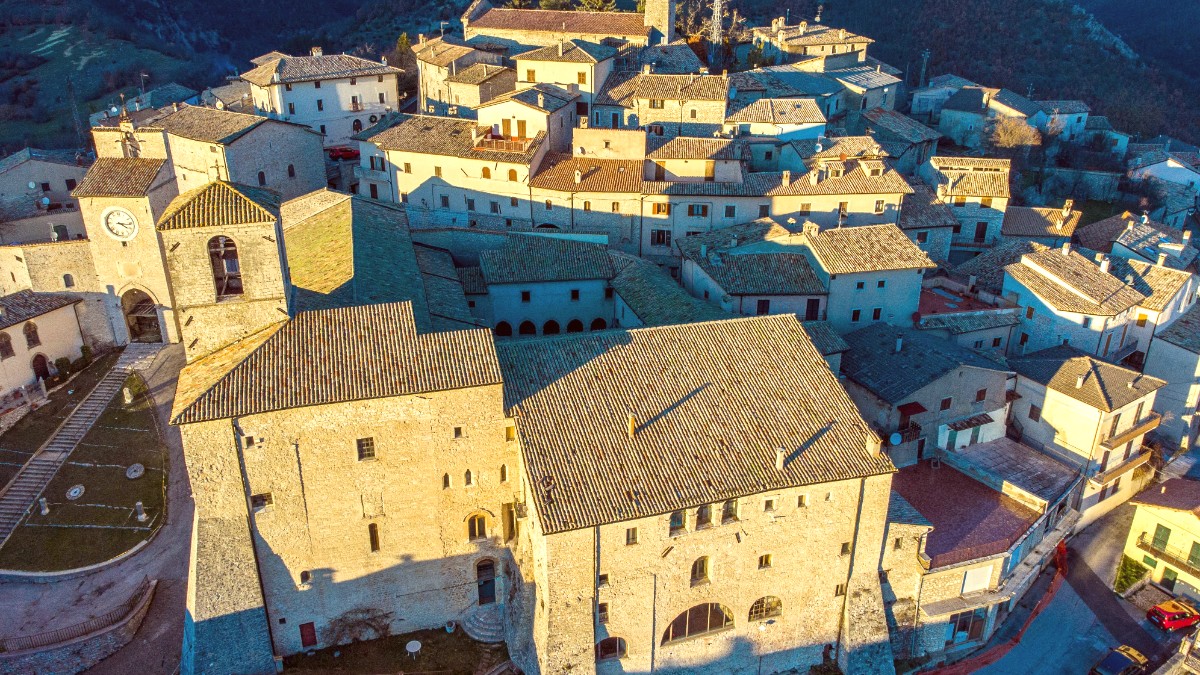
Umbria And Le Marche, Italy
These sites are testament to Spoleto's deep cultural roots and historical significance.
Each landmark offers a glimpse into different eras of the city's past.
Roman Theatre/Museum Fees: Around €4-6 for entry, often combined with archaeological museum access.
Early mornings (before 10 AM) and late afternoons (after 4 PM) generally have fewer visitors, especially outside the Spoleto Festival.
Walk on Monteluco hill (via Ponte delle Torri) for different perspectives of Rocca and Spoleto.
Offers a classic view of the Rocca from below, specifically impressive when illuminated at night.
Seek out small, elevated gardens and terraces within the historic center for unexpected views.
Explore the quiet backstreets for charming, uncrowded scenes.
Spoleto has a range of museums and cultural spaces, reflecting its artistic and historical depth.
Housed in Rocca Albornoziana. Exhibits trace the Duchy's history, including Roman artifacts, medieval sculptures, and frescoes.
Located in the former Monastery of Sant'Agata, next to the Roman Theatre. Displays include prehistoric, Umbrian, and Roman artifacts.
Next to the Duomo. Features sacred art, reliquaries, and paintings from local churches, some from the 13th century.
In an 18th-century palace. Features modern and contemporary art collections, including Alexander Calder's works.
This museum offers a contrast to Spoleto's ancient history, showing modern artistic expressions.
It includes artists who participated in the Spoleto Festival dei Due Mondi.
Remains of a 1st-century AD Roman house. Offers a detailed glimpse into ancient Roman domestic life with preserved mosaics and frescoes.
Dedicated to the history of textiles and fashion. Displays garments and fabrics from different historical periods, offering an unique cultural view.
Palazzo Collicola often hosts temporary exhibitions. During the Spoleto Festival, smaller pop-up galleries appear, showing diverse artistic expressions.
Spoleto hosts significant venues for cultural performances throughout the year.
Spoleto’s history is etched into its very fabric, from ancient ruins to medieval churches.
Explore centuries of heritage embedded in the city's architecture and foundations.
Discover the remnants of Spoleto's ancient past.
Wander through the living history of Spoleto.
Explore Spoleto's deep spiritual heritage.
Glimpses into Spoleto's strategic and developmental past.
Beyond the main attractions, Spoleto holds several lesser-known treasures.
A stunning walking and cycling path, converted from a disused railway. Features old tunnels, bridges, and breathtaking scenery. Offers adventure away from typical tourist routes.
A beautiful 17th-century fountain, hidden in a charming, quieter corner of the old town. Overlooked by many tourists, it makes for a peaceful spot for reflection and photography.
A quiet Romanesque church and monastery complex just outside the city walls. Features unique crypts and offers a tranquil escape, often missed by visitors.
The views from the bridge at these times are spectacular, with soft light casting long shadows over the valley and Rocca.
Explore the PonteThe winding cobblestone alleys offer endless opportunities to capture the medieval charm of Spoleto. Seek interesting archways and unexpected perspectives.
Wander the AlleysLook for reflections in puddles, capturing the old town's unique charm in a different light and adding depth to your photos.
Capture ReflectionsThe distinctive and highly detailed facade of this church presents a captivating subject for photography, showing intricate Romanesque sculpture.
See the SculptureSeek small artisan workshops and local taverns in quieter backstreets for authentic products and experiences often missed.
Find Local SpotsThese spots offer a more authentic view of Spoleto life.
Explore areas beyond Spoleto, still discovering their potential.
Wildlife: No specific "safaris" exist. Wildlife sightings are possible during hikes in protected areas, like Monti Martani or Monti Sibillini National Park. You might see deer or wild boar.
Geological: The distinctive limestone hills and valleys define Umbria's landscape around Spoleto, creating its unique topography.
Spoleto, being inland, has no direct beaches, but nearby water features offer recreation.
Many agriturismos and some hotels have outdoor swimming pools, typically open from May to September, offering a refreshing way to relax during warmer months.
This river flows through the valley below Spoleto.
Umbria's largest lake, about an hour's drive from Spoleto. Offers water sports and charming lakeside towns, suitable for a day trip.
About an hour drive from Spoleto. Umbria's largest lake has various water sports, including sailing, windsurfing, kayaking, and paddleboarding.
Find Lake ActivitiesAvailable on the Corno River in Valnerina valley, near Marmore Falls (about an hour's drive). Guided rafting trips suit various skill levels.
Book a Rafting TripOpportunities exist in the Sibilline Mountains (further afield). These activities offer breathtaking aerial views of the Umbrian landscape.
See Aerial ViewsNo specific safaris are offered. Wildlife viewing is possible during hikes in protected areas, where you might spot deer or wild boar.
Explore NatureSpoleto-Assisi Cycling Path: A flat, paved, family-friendly route. Former Spoleto-Norcia Railway: A more adventurous, unpaved path. Bike rentals available.
Rent a BikeExplore the Umbrian landscape on foot.
Spoleto makes a good base for various cycling experiences.
Check trail conditions and weather forecasts before setting out.
For adventure sports, arrange with certified tour operators for a safe experience.
For relaxation, Spoleto offers a peaceful setting and some wellness options.
Spoleto itself has limited dedicated luxury spas. Some hotels might provide basic spa services, like massages.
No natural hot springs exist directly in Spoleto.
Some agriturismos in the peaceful Umbrian countryside provide yoga retreats or wellness programs.
These rural retreats offer a serene escape for mind and body.
Spoleto is an inland town, so no beaches are nearby.
These pools offer a refreshing way to relax during hot summer days.
Traditional healing practices are not a prominent tourist offering in Spoleto.
Visitors typically seek cultural immersion and outdoor activities.
Dedicated live music venues are limited. During the Spoleto Festival, numerous concerts take place. Some local bars may host occasional live music nights. Check local listings.
Teatro Nuovo Gian Carlo Menotti and Teatro Caio Melisso are main historic theaters, mainly active during the Spoleto Festival for opera, drama, and dance performances. Outside the festival, occasional local productions may occur.
No major nightclubs exist for dancing. The town’s atmosphere leans towards quiet evenings. Nightlife focuses on aperitivo and after-dinner drinks at local bars and enoteche in the historic center.